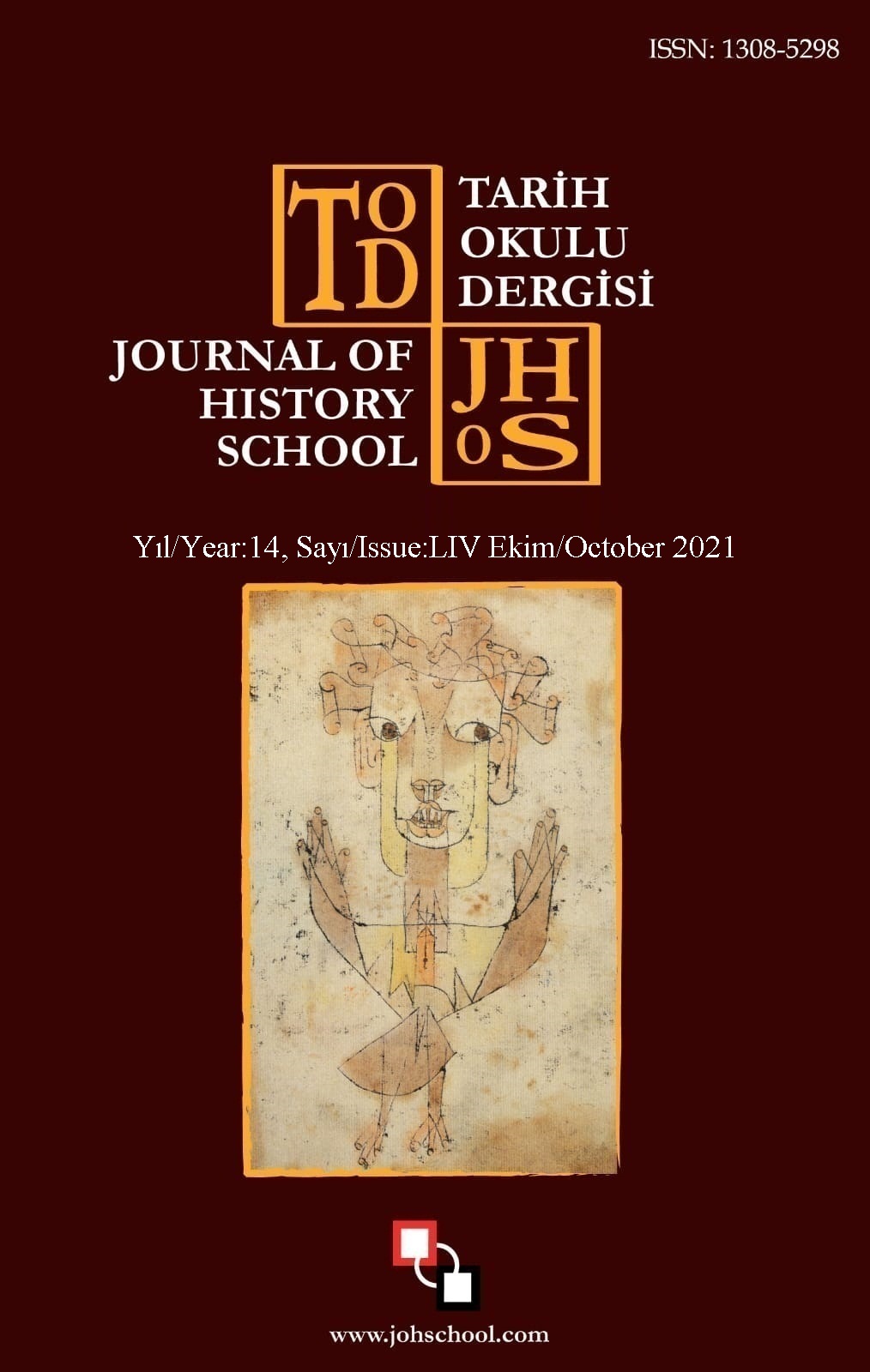Author :
Abstract
Osmanlı İmparatorluğu’nda Batılılaşma hareketleri, 19.yüzyıl başından itibaren daha sistemli bir şekilde gerçekleşmiştir. İlk olarak Batı tarzındaki askerî okulların açılmasıyla başlayan bu süreç, Mekteb-i Maârif-i Adliyye’nin açılmasıyla sivil okullarda da kendini göstermiştir. Bu süreçte yetişen veya daha sonra Avrupa’ya gönderilip resim eğitimi alan askerî okul öğrencileri, Türk resim sanatı tarihinde Asker Ressamlar Kuşağı’nı oluşturmuştur. Bu araştırmada resim eğitimi almak için Avrupa’ya gideceği sırada Napoli’de ortaya çıkan kolera salgını nedeniyle ülkeden ayrılamayan, çağdaşlarının aksine eğitimine ülkesinde devam eden asker ressam Hoca Ali Rıza ve sanat eğitimini Paris’te Fernand Cormon atölyesinde sürdüren ressam Hikmet Onat’ın peyzaj çalışmaları Türk resmindeki Batı etkileri açısından incelenmiştir. Araştırmanın yöntemi, nitel araştırma yöntemlerinden doküman incelemesidir. Bu kapsamda araştırma konusunu oluşturan sanatçılar ve onlarla ilişkili olan diğer sanatçıların resimleri birincil; konuyla ilgili belgeler ise ikincil veri kaynakları olarak araştırmaya dâhil edilmiştir. Araştırma sonunda Türk resim sanatında Batı etkisinin, diğer bütün alanlarda olduğu gibi askerî okullarda başladığı ancak resimlerdeki Batılılaşmanın genel kanaatin aksine Batı’ya giden öğrencilerin kişisel etkilenmelerinin ötesinde sosyo-politik ve sosyokültürel bir değişimin yansıması olduğu anlaşılmıştır. Dolayısıyla Hikmet Onat’ın yurt dışında eğitim almasına rağmen Hoca Ali Rıza’nın almamış olmasının, onların sanatlarındaki Batılılaşma etkisi üzerinde belirleyici olmadığı ve Batılılaşmanın dönemin toplumsal dönüşümü ve politik ikliminin bir sonucu olduğu anlaşılmıştır.
Keywords
Abstract
Westernization movements in the Ottoman Empire have been more systematic since the beginning of the 19th century. This process, which first started with the opening of Western-style military schools, showed itself in civilian schools with the opening of the Mekteb-i Maârif-i Adliyye. Military school students, who grew up in this process or were sent to Europe and received painting training, formed the Generation of Soldier Painters in the history of Turkish painting. In the current study, the landscape paintings of Hoca Ali Rıza, as soldier painter who could not leave the country due to the cholera epidemic that occurred in Naples while he was going to Europe to study painting, and who continued his education in his country, unlike his contemporaries, and of painter Hikmet Onat, who continued his art education in the atelier of Fernand Cormon in Paris, were analyzed in terms of Western influences. The study employed the document review method, one of the qualitative research methods. In this context, the paintings of the artists who are the subject of the current study and other artists who are related to them were included in the study as the primary data sources and documents related to the subject as the secondary data sources. At the end of the study, it was understood that the Western influence in Turkish painting art started in military schools as in all other fields, but contrary to the general opinion, Westernization in paintings was a reflection of a socio-political and socio-cultural change beyond the personal influence of students who went to the West. Thus, it was concluded that although Hikmet Onat received painting education abroad but Hoca Ali Rıza did not, the influence of Westernization was seen in the works of both painters, indicating that Westernization movement was more a result of the social transformation and political climate of the period.
Keywords
- Görsel 1. Uğurlu, V. (1995). Hikmet Onat. Yapı Kredi Kültür Sanat. s.37.
- Görsel 2. Türkiye İş Bankası. (1994). Hikmet Onat (1882-1977) Resim Sergisi. Türkiye İş Bankası.
- Görsel 3. https://commons.wikimedia.org/wiki/File:A _Forge_1894_Fernand_ Cormon.jpg 15/02/2021, Erişim tarihi: 15.02.2021
- Görsel 4. Türkiye İş Bankası (1994). Hikmet Onat (1882-1977) Resim Sergisi.
- Görsel 5. Demir, F. (2000). Cézanne. Dost. s.55
- Görsel 6. Nonhoff, N. (2005). Cézanne. İstanbul: Literatür. s.46
- Görsel 7. Nonhoff, N. (2005). Cézanne. İstanbul: Literatür. s.42.
- Görsel 8. https://artsandculture.google.com/asset/potato-planters/-AFCoNLer L0HbA?hl=tr, Erişim tarihi: 15.02.2021
- Görsel 10. https://artam.com/muzayede/291-degerli-tablolar-ve-antikalar/hoca- aliriza-1858-1930-kirmizi-kir-kahvesi, Erişim tarihi: 15.02.2021
- Görsel 11. https://www.istanbulsanatevi.com/sanatcilar/soyadi-h/hoca-aliriza/ hoca-ali-riza-peyzaj-6151/, Erişim tarihi: 15.02.2021
- Görsel 12. https://www.istanbulsanatevi.com/sanatcilar/soyadi-h/halil-pasa/ halil-pasa-mektup-8295/, Erişim tarihi: 15.02.2021
- Görsel 13. Tansuğ, S. (2005). Çağdaş Türk Resim Sanatı. Remzi. s.96.
- Görsel 16. http://www.leblebitozu.com/osmanli-istanbulunun-resmini-yapan-19- yabanci-ressam/, Erişim tarihi: 15.02.2021
- Görsel 17. https://www.istanbulmuzayede.com/en/product/918828/leonardo-de- mango-kagithane-imzali-1909-mukavva-uzeri-yagliboya-11-x-17-cm, Erişim tarihi: 15.02.2021
